 Many patients have pain in the heel area of the foot, and this may be indicative of condition that is known as a heel spur. It is considered to be a bony growth that forms underneath the heel and may be hooked or pointed. It grows toward the middle of the foot and can cause pain in the arch. The symptoms that are associated with heel spurs often include heel pain upon arising in the morning, swelling and heat coming from the affected heel, and the foot may feel achy as the day progresses. It can develop for a variety of reasons. These can consist of an injury that has occurred to the heel, participating in running and jumping activities, and wearing shoes that do not fit correctly. If you feel you may have developed a heel spur, it is advised to seek the counsel of a podiatrist who can determine what the best treatment is for you.
Many patients have pain in the heel area of the foot, and this may be indicative of condition that is known as a heel spur. It is considered to be a bony growth that forms underneath the heel and may be hooked or pointed. It grows toward the middle of the foot and can cause pain in the arch. The symptoms that are associated with heel spurs often include heel pain upon arising in the morning, swelling and heat coming from the affected heel, and the foot may feel achy as the day progresses. It can develop for a variety of reasons. These can consist of an injury that has occurred to the heel, participating in running and jumping activities, and wearing shoes that do not fit correctly. If you feel you may have developed a heel spur, it is advised to seek the counsel of a podiatrist who can determine what the best treatment is for you.
Heel spurs can be incredibly painful and sometimes may make you unable to participate in physical activities. To get medical care for your heel spurs, contact Brent Harwood, DPM from Southeast Podiatry. Our doctor will do everything possible to treat your condition.
Heels Spurs
Heel spurs are formed by calcium deposits on the back of the foot where the heel is. This can also be caused by small fragments of bone breaking off one section of the foot, attaching onto the back of the foot. Heel spurs can also be bone growth on the back of the foot and may grow in the direction of the arch of the foot.
Older individuals usually suffer from heel spurs and pain sometimes intensifies with age. One of the main condition's spurs are related to is plantar fasciitis.
Pain
The pain associated with spurs is often because of weight placed on the feet. When someone is walking, their entire weight is concentrated on the feet. Bone spurs then have the tendency to affect other bones and tissues around the foot. As the pain continues, the feet will become tender and sensitive over time.
Treatments
There are many ways to treat heel spurs. If one is suffering from heel spurs in conjunction with pain, there are several methods for healing. Medication, surgery, and herbal care are some options.
If you have any questions feel free to contact one of our offices located in Fairhope, Brewton, and Atmore, AL . We offer the latest in diagnostic and treatment technology to meet your needs.
Read more about Heel Spurs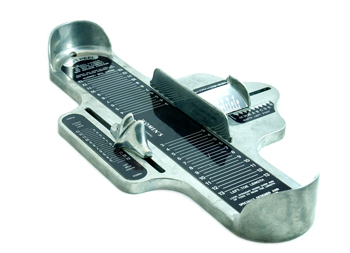 It is beneficial to maintain proper foot care which can be helpful in accomplishing daily activities. Choosing a correct shoe size is important in preventing uncomfortable foot conditions from developing. Many people find it useful to measure the feet using a Brannock device, as this will help in determining the correct shoe size. It is important to try shoes on at the end of the day, because this can help to ensure the shoes will fit properly when the feet are at their largest. Additionally, there needs to be adequate room in the tip of the shoe, so the toes can move freely. Both shoes should be tried on and walked in before purchasing them, and if the footwear is made of a soft, leather material, it may reduce the possibility of getting skin irritations. Many people find it easier to find shoes that fit well if a shoe is shaped like the foot. If you would like additional information about the importance of wearing shoes that fit properly, please consult with a podiatrist.
It is beneficial to maintain proper foot care which can be helpful in accomplishing daily activities. Choosing a correct shoe size is important in preventing uncomfortable foot conditions from developing. Many people find it useful to measure the feet using a Brannock device, as this will help in determining the correct shoe size. It is important to try shoes on at the end of the day, because this can help to ensure the shoes will fit properly when the feet are at their largest. Additionally, there needs to be adequate room in the tip of the shoe, so the toes can move freely. Both shoes should be tried on and walked in before purchasing them, and if the footwear is made of a soft, leather material, it may reduce the possibility of getting skin irritations. Many people find it easier to find shoes that fit well if a shoe is shaped like the foot. If you would like additional information about the importance of wearing shoes that fit properly, please consult with a podiatrist.
Finding a properly-fitting shoe is important in reducing injuries and preventing foot problems. For more information about treatment, contact Brent Harwood, DPM from Southeast Podiatry. Our doctor will treat your foot care needs.
Proper Shoe Fitting
A common concern when it comes to foot health, having properly fitted shoes can help prevent injuries to the foot. Out feet affect our posture and gait, which in turn affects the biomechanics and overall bodily structure. With 33 joints, 26 bones, and over 100 ligaments, the potential for serious injury is much greater than one realizes. Although the feet cease growth in adulthood, they still change shape as they mature. Here are some factors to consider when it comes to investing in proper fitting shoes:
Keeping in mind how shoes fit the biomechanics of your body, properly-fitting shoes are vitally important. Fortunately, it is not difficult to acquire footwear that fits correctly. Be sure to wear shoes that support the overall structure of your body. Do your feet a favor and invest in several pairs of well-fitted shoes today.
If you have any questions please feel free to contact one of our offices located in Fairhope, Brewton, and Atmore, AL . We offer the newest diagnostic and treatment technologies for all your foot care needs.
Read more about Proper Shoe Fitting If chronic pain is present in the feet, surgery may be an option to consider. One type of surgery that is referred to as arthroscopic debridement may help patients in the beginning stages of arthritis. This procedure removes any inflamed tissue that has developed on the joints and surrounding areas. If you have a bunion and wearing shoes becomes painful, permanent removal of the bunion could be a successful treatment option. Many people experience heel pain. This may be indicative of plantar fasciitis, or heel spurs. These patients may find it beneficial to undergo heel surgery, which can be helpful in correcting the condition. Aftercare for most foot surgeries will typically consist of keeping the foot elevated, in addition to wearing a splint or bandage on the recovering foot. If you are considering any type of foot surgery, it is suggested to consult with a podiatrist who can properly guide you.
If chronic pain is present in the feet, surgery may be an option to consider. One type of surgery that is referred to as arthroscopic debridement may help patients in the beginning stages of arthritis. This procedure removes any inflamed tissue that has developed on the joints and surrounding areas. If you have a bunion and wearing shoes becomes painful, permanent removal of the bunion could be a successful treatment option. Many people experience heel pain. This may be indicative of plantar fasciitis, or heel spurs. These patients may find it beneficial to undergo heel surgery, which can be helpful in correcting the condition. Aftercare for most foot surgeries will typically consist of keeping the foot elevated, in addition to wearing a splint or bandage on the recovering foot. If you are considering any type of foot surgery, it is suggested to consult with a podiatrist who can properly guide you.
Foot surgery is sometimes necessary to treat a foot ailment. To learn more, contact Brent Harwood, DPM of Southeast Podiatry. Our doctor will assist you with all of your foot care needs.
When Is Surgery Necessary?
Foot surgery is generally reserved for cases in which less invasive, conservative procedures have failed to alleviate the problem. Some of the cases in which surgery may be necessary include:
What Types of Surgery Are There?
The type of surgery you receive will depend on the nature of the problem you have. Some of the possible surgeries include:
Benefits of Surgery
Although surgery is usually a last resort, it can provide more complete pain relief compared to non-surgical methods and may allow you to finally resume full activity.
Surgical techniques have also become increasingly sophisticated. Techniques like endoscopic surgery allow for smaller incisions and faster recovery times.
If you have any questions please feel free to contact one of our offices located in Fairhope, Brewton, and Atmore, AL . We offer the newest diagnostic and treatment technologies for all your foot care needs.
 Many people suffer from heel pain, including people who are obese. Mild relief may be found when exercises and foot stretches are frequently performed. People who are overweight may have challenges in practicing a regular exercise regime, and this may be a result of the additional weight the body endures. There are aerobic exercises that can be performed, which can aid in weight loss. If traditional forms of exercise are difficult to partake in, there are other methods to accomplish a weight loss goal. These can include cycling and swimming. Additionally, it is helpful to reduce the amount of calories that are eaten, as this can be beneficial in attaining exercise goals. If you are overweight and experiencing heel pain, it is suggested to consult with a podiatrist who can guide you toward relief.
Many people suffer from heel pain, including people who are obese. Mild relief may be found when exercises and foot stretches are frequently performed. People who are overweight may have challenges in practicing a regular exercise regime, and this may be a result of the additional weight the body endures. There are aerobic exercises that can be performed, which can aid in weight loss. If traditional forms of exercise are difficult to partake in, there are other methods to accomplish a weight loss goal. These can include cycling and swimming. Additionally, it is helpful to reduce the amount of calories that are eaten, as this can be beneficial in attaining exercise goals. If you are overweight and experiencing heel pain, it is suggested to consult with a podiatrist who can guide you toward relief.
Obesity has become very problematic at this point in time and can have extremely negative effects on the feet. If you’re an obese individual and are concerned about your feet, contact Brent Harwood, DPM from Southeast Podiatry. Our doctor can provide the care you need to keep you pain-free and on your feet.
Obesity and Your Feet
Since your feet are what support your entire weight when standing, any additional weight can result in pain and swelling. Being overweight is one of the main contributors to foot complications.
Problems & Complications
Extra Weight – Even putting on just a few extra pounds could create serious complications for your feet. As your weight increases, your balance and body will shift, creating new stresses on your feet. This uneven weight distribution can cause pain, even while doing the simplest tasks, such as walking.
Diabetes – People who are overweight are at serious risk of developing type-2 diabetes, which has a drastic impact on the health of your feet. As you get older, your diabetes might worsen, which could lead to loss of feeling in your feet, sores, and bruises. You could also become more prone to various infections.
Plantar fasciitis – Pressure and stress that is placed on muscles, joints, and tendons can trigger plantar fasciitis, which is an inflammation of tissue that forms along the bottom of the foot.
If you have any questions please feel free to contact one of our offices located in Fairhope, Brewton, and Atmore, AL . We offer the newest diagnostic and treatment technologies for all your foot care needs.
Read more about How Obesity Affects Your Feet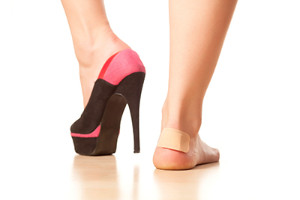 Many women enjoy wearing high heels despite knowing they can be harmful to the feet. There are many uncomfortable conditions that can originate from wearing this type of shoe, including shortened Achilles tendons, and a restriction in circulation. Additionally, the can bend forward, and it may feel like you are standing on tiptoes when high heels are worn. Many people experience bunions and hammertoes from wearing high heels. These ailments can be a result of having inadequate room for the toes to move freely in. Research has shown it is beneficial to alternate between wearing high heels and flat shoes, as this may help to reduce any foot damage that can occur. If you would like additional information about how high heels can harm the feet, please consult with a podiatrist.
Many women enjoy wearing high heels despite knowing they can be harmful to the feet. There are many uncomfortable conditions that can originate from wearing this type of shoe, including shortened Achilles tendons, and a restriction in circulation. Additionally, the can bend forward, and it may feel like you are standing on tiptoes when high heels are worn. Many people experience bunions and hammertoes from wearing high heels. These ailments can be a result of having inadequate room for the toes to move freely in. Research has shown it is beneficial to alternate between wearing high heels and flat shoes, as this may help to reduce any foot damage that can occur. If you would like additional information about how high heels can harm the feet, please consult with a podiatrist.
High heels have a history of causing foot and problems. If you have any concerns about your feet or , contact Brent Harwood, DPM from Southeast Podiatry. Our doctor can provide the care you need to keep you pain-free and on your feet.
Effects of High Heels on the Feet
High heels are popular shoes among women because of their many styles and societal appeal. Despite this, high heels can still cause many health problems if worn too frequently.
Which Parts of My Body Will Be Affected by High Heels?
What Kinds of Foot Problems Can Develop from Wearing High Heels?
How Can I Still Wear High Heels and Maintain Foot Health?
If you want to wear high heeled shoes, make sure that you are not wearing them every day, as this will help prevent long term physical problems. Try wearing thicker heels as opposed to stilettos to distribute weight more evenly across the feet. Always make sure you are wearing the proper shoes for the right occasion, such as sneakers for exercising. If you walk to work, try carrying your heels with you and changing into them once you arrive at work. Adding inserts to your heels can help cushion your feet and absorb shock. Full foot inserts or metatarsal pads are available.
If you have any questions please feel free to contact one of our offices located in Fairhope, Brewton, and Atmore, AL . We offer the newest diagnostic and treatment technologies for all your foot care needs.
Read more about Effect of High Heels on the Feet The location of the sesamoid bones is inside a tendon in the foot. The two bones are next to each other under the big toe joint in the bottom of the foot. They help to raise and move the big toe and can push off the ground while running. They take the strain off the foot while walking and running by absorbing the weight of the foot. If these bones should become inflamed, a condition that is referred to as sesamoiditis develops. It happens as a result of pressure that is exerted on the sesamoid bones and is a common condition among runners. There may be existing circumstances that lead to this ailment, including having high arches, or feet that have minimal cushioning on the sole of the foot. The symptoms that are common with sesamoiditis will typically include achiness in the ball of the foot, and a severe, throbbing sensation. If you feel you have sesamoiditis, it is advised to consult with a podiatrist, so proper treatment can begin.
The location of the sesamoid bones is inside a tendon in the foot. The two bones are next to each other under the big toe joint in the bottom of the foot. They help to raise and move the big toe and can push off the ground while running. They take the strain off the foot while walking and running by absorbing the weight of the foot. If these bones should become inflamed, a condition that is referred to as sesamoiditis develops. It happens as a result of pressure that is exerted on the sesamoid bones and is a common condition among runners. There may be existing circumstances that lead to this ailment, including having high arches, or feet that have minimal cushioning on the sole of the foot. The symptoms that are common with sesamoiditis will typically include achiness in the ball of the foot, and a severe, throbbing sensation. If you feel you have sesamoiditis, it is advised to consult with a podiatrist, so proper treatment can begin.
Sesamoiditis is an unpleasant foot condition characterized by pain in the balls of the feet. If you think you’re struggling with sesamoiditis, contact Brent Harwood, DPM of Southeast Podiatry. Our doctor will treat your condition thoroughly and effectively.
Sesamoiditis
Sesamoiditis is a condition of the foot that affects the ball of the foot. It is more common in younger people than it is in older people. It can also occur with people who have begun a new exercise program, since their bodies are adjusting to the new physical regimen. Pain may also be caused by the inflammation of tendons surrounding the bones. It is important to seek treatment in its early stages because if you ignore the pain, this condition can lead to more serious problems such as severe irritation and bone fractures.
Causes of Sesamoiditis
Treatment for sesamoiditis is non-invasive and simple. Doctors may recommend a strict rest period where the patient forgoes most physical activity. This will help give the patient time to heal their feet through limited activity. For serious cases, it is best to speak with your doctor to determine a treatment option that will help your specific needs.
If you have any questions please feel free to contact one of our offices located in Fairhope, Brewton, and Atmore, AL . We offer the newest diagnostic and treatment technologies for all your foot and ankle needs.
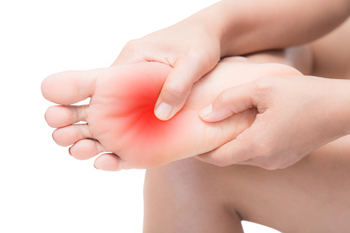 Most people with rheumatoid arthritis experience pain in their feet at some point during their time with the ailment. Understanding the disease and the effects it could have on the feet may help you recognize the problem early and begin treatment. Rheumatoid arthritis is a disease in which the body attacks its own joints. This disease is unique in that many joints may be impacted at the same time. People with the disease may notice the development of bunions, hammertoes, and fallen arches. Additional foot complications affiliated with rheumatoid arthritis include heel pain, pinched nerves, nodules and rashes. The condition is painful and incurable. However, early treatment can help people with the disease control the discomfort and maintain their livelihoods. If you are experiencing any type of foot pain, it is suggested that you consult with a podiatrist.
Most people with rheumatoid arthritis experience pain in their feet at some point during their time with the ailment. Understanding the disease and the effects it could have on the feet may help you recognize the problem early and begin treatment. Rheumatoid arthritis is a disease in which the body attacks its own joints. This disease is unique in that many joints may be impacted at the same time. People with the disease may notice the development of bunions, hammertoes, and fallen arches. Additional foot complications affiliated with rheumatoid arthritis include heel pain, pinched nerves, nodules and rashes. The condition is painful and incurable. However, early treatment can help people with the disease control the discomfort and maintain their livelihoods. If you are experiencing any type of foot pain, it is suggested that you consult with a podiatrist.
Because RA affects more than just your joints, including the joints in your Feet, it is important to seek early diagnosis from your podiatrist if you feel like the pain in your feet might be caused by RA. For more information, contact Brent Harwood, DPM of Southeast Podiatry. Our doctor will assist you with all of your podiatric concerns.
What Is Rheumatoid Arthritis?
Rheumatoid Arthritis (RA) is an autoimmune disorder in which the body’s own immune system attacks the membranes surrounding the joints. Inflammation of the lining and eventually the destruction of the joint’s cartilage and bone occur, causing severe pain and immobility.
Rheumatoid Arthritis of the Feet
Although RA usually attacks multiple bones and joints throughout the entire body, almost 90 percent of cases result in pain in the foot area.
Symptoms
Diagnosis
Quick diagnosis of RA in the feet is important so that the podiatrist can treat the area effectively. Your doctor will ask you about your medical history, occupation, and lifestyle to determine the origin of the condition. Rheumatoid Factor tests help to determine if someone is affected by the disease.
If you have any questions please feel free to contact one of our offices located in Fairhope, Brewton, and Atmore, AL . We offer the newest diagnostic and treatment technologies for all your foot care needs.
Read more about Rheumatoid Arthritis in the Feet Doctors that are referred to as podiatrists provide treatment for many foot conditions. These include ingrown toenails, foot injuries, and neuromas. The education podiatrists go through consists of medical school training, followed by obtaining a doctorate degree in podiatry. Many podiatrists choose to perform surgery that helps to correct bunions, hammertoe, and Achilles tendon injuries. Additionally, they are able to diagnose foot conditions which may improve from wearing custom made orthotics. These may be helpful in improving abnormal walking patterns, and patients who are afflicted with plantar fasciitis may find relief. If you would like to pursue a career in this field of medicine, please consult with a podiatrist who can answer any questions you may have.
Doctors that are referred to as podiatrists provide treatment for many foot conditions. These include ingrown toenails, foot injuries, and neuromas. The education podiatrists go through consists of medical school training, followed by obtaining a doctorate degree in podiatry. Many podiatrists choose to perform surgery that helps to correct bunions, hammertoe, and Achilles tendon injuries. Additionally, they are able to diagnose foot conditions which may improve from wearing custom made orthotics. These may be helpful in improving abnormal walking patterns, and patients who are afflicted with plantar fasciitis may find relief. If you would like to pursue a career in this field of medicine, please consult with a podiatrist who can answer any questions you may have.
If you are experiencing pain in the feet or , don’t join the stubborn majority refusing treatment. Feel free to contact Brent Harwood, DPM from Southeast Podiatry. Our doctor can provide the care you need to keep you pain-free and on your feet.
What Is a Podiatrist?
Someone would seek the care of a podiatrist if they have suffered a foot injury or have common foot ailments such as heal spurs, bunions, arch problems, deformities, ingrown toenails, corns, foot problems, etc.
Podiatric Treatment
A podiatrist will treat the problematic areas of the feet, or lower leg by prescribing the following:
A common podiatric procedure a podiatrist will use is a scanner or force plate which will allow the podiatrist to know the designs of orthotics. Patients are then told to follow a series of tasks to complete the treatment. The computer will scan the foot a see which areas show weight distribution and pressure points. The podiatrist will read the analysis and then determine which treatment plans are available.
If you have any questions please feel free to contact one of our offices located in Fairhope, Brewton, and Atmore, AL . We offer the newest diagnostic and treatment technologies for all your foot care needs.
Read more about What is a Podiatrist?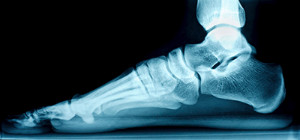 The medical condition that is referred to as flat feet occurs when the arch is missing from the foot. Most babies are born with flat feet, and the arch typically develops in the first few years of life. Some patients have flat feet as an adult, which can occur as a result of illness or injuries. Some of the symptoms that are associated with this condition include pain while standing for extended periods of time, in addition to an achy feeling in the . Treatment of flat feet may begin with wearing orthotics in your shoes that can provide additional support. Pain and discomfort may be reduced when a healthy lifestyle is implemented. This can include losing excess weight, which may put pressure on the feet, in addition to performing a gentle exercise routine. If you have questions about flat feet, it is suggested that you speak to a podiatrist who can properly treat this condition.
The medical condition that is referred to as flat feet occurs when the arch is missing from the foot. Most babies are born with flat feet, and the arch typically develops in the first few years of life. Some patients have flat feet as an adult, which can occur as a result of illness or injuries. Some of the symptoms that are associated with this condition include pain while standing for extended periods of time, in addition to an achy feeling in the . Treatment of flat feet may begin with wearing orthotics in your shoes that can provide additional support. Pain and discomfort may be reduced when a healthy lifestyle is implemented. This can include losing excess weight, which may put pressure on the feet, in addition to performing a gentle exercise routine. If you have questions about flat feet, it is suggested that you speak to a podiatrist who can properly treat this condition.
Flatfoot is a condition many people suffer from. If you have flat feet, contact Brent Harwood, DPM from Southeast Podiatry. Our doctor will treat your foot care needs.
What Are Flat Feet?
Flatfoot is a condition in which the arch of the foot is depressed and the sole of the foot is almost completely in contact with the ground. About 20-30% of the population generally has flat feet because their arches never formed during growth.
Conditions & Problems:
Having flat feet makes it difficult to run or walk because of the stress placed on the .
Alignment – The general alignment of your legs can be disrupted, because the move inward which can cause major discomfort.
Knees – If you have complications with your knees, flat feet can be a contributor to arthritis in that area.
Symptoms
Treatment
If you are experiencing pain and stress on the foot you may weaken the posterior tibial tendon, which runs around the inside of the .
If you have any questions please feel free to contact one of our offices located in Fairhope, Brewton, and Atmore, AL . We offer the newest diagnostic and treatment technologies for all your foot care needs.
Read more about Flat Feet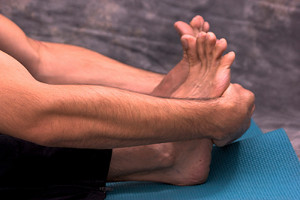 The feet bear the weight of the body throughout the day, and it is important to properly take care of them. This includes practicing frequent foot stretches which may reduce common aches and pains in the feet. An effective stretch for the arch is done by rolling your foot on a tennis ball, and this is helpful in relaxing the muscles. The toes can be strengthened by standing on tiptoes for several seconds, followed by standing flat on the ground. The toes will feel refreshed when this stretching technique is repeated a few times. An additional stretch for the toes is accomplished by interlocking your fingers through your toes while gently rolling the in circles. This is beneficial in strengthening the joints in the . If you would like additional information about how stretching can benefit the feet, please consult with a podiatrist.
The feet bear the weight of the body throughout the day, and it is important to properly take care of them. This includes practicing frequent foot stretches which may reduce common aches and pains in the feet. An effective stretch for the arch is done by rolling your foot on a tennis ball, and this is helpful in relaxing the muscles. The toes can be strengthened by standing on tiptoes for several seconds, followed by standing flat on the ground. The toes will feel refreshed when this stretching technique is repeated a few times. An additional stretch for the toes is accomplished by interlocking your fingers through your toes while gently rolling the in circles. This is beneficial in strengthening the joints in the . If you would like additional information about how stretching can benefit the feet, please consult with a podiatrist.
Stretching the feet is a great way to prevent injuries. If you have any concerns with your feet consult with Brent Harwood, DPM from Southeast Podiatry. Our doctor will assess your condition and provide you with quality foot and treatment.
Stretching the Feet
Stretching the muscles in the foot is an important part in any physical activity. Feet that are tight can lead to less flexibility and make you more prone to injury. One of the most common forms of foot pain, plantar fasciitis, can be stretched out to help ease the pain. Stretching can not only ease pain from plantar fasciitis but also prevent it as well. However, it is important to see a podiatrist first if stretching is right for you. Podiatrists can also recommend other ways to stretch your feet. Once you know whether stretching is right for you, here are some excellent stretches you can do.
It is best to go easy when first stretching your foot and work your way up. If your foot starts hurting, stop exercising and ice and rest the foot. It is advised to then see a podiatrist for help.
If you have any questions, please feel free to contact one of our offices located in Fairhope, Brewton, and Atmore, AL . We offer the newest diagnostic and treatment technologies for all your foot care needs.
Read more about How to Stretch Your Feet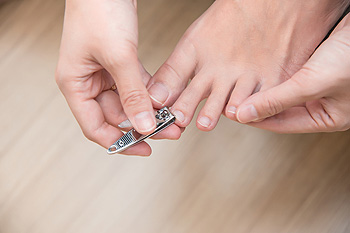 When the feet feel good, the overall health of the body is positively affected. There are several methods that can be implemented for daily foot care. These include using warm water to wash your feet every day, applying a good moisturizer, and carefully trimming the toenails. Research has indicated feet are larger in the afternoon, and it is beneficial to purchase shoes in the middle of the day to ensure a maximum level of comfort. If you use community pools, showers or locker rooms, it is advised to wear appropriate shoes, which can help prevent foot conditions such as athlete's foot or toenail fungus. If you would like additional information about proper foot care, please consult with a podiatrist who can answer any questions you have.
When the feet feel good, the overall health of the body is positively affected. There are several methods that can be implemented for daily foot care. These include using warm water to wash your feet every day, applying a good moisturizer, and carefully trimming the toenails. Research has indicated feet are larger in the afternoon, and it is beneficial to purchase shoes in the middle of the day to ensure a maximum level of comfort. If you use community pools, showers or locker rooms, it is advised to wear appropriate shoes, which can help prevent foot conditions such as athlete's foot or toenail fungus. If you would like additional information about proper foot care, please consult with a podiatrist who can answer any questions you have.
Everyday foot care is very important to prevent infection and other foot ailments. If you need your feet checked, contact Brent Harwood, DPM from Southeast Podiatry. Our doctor can provide the care you need to keep you pain-free and on your feet.
Everyday Foot Care
Often, people take care of their bodies, face and hair more so than they do for their feet. But the feet are a very important aspect of our bodies, and one that we should pay more attention to. Without our feet, we would not be able to perform most daily tasks.
It is best to check your feet regularly to make sure there are no new bruises or cuts that you may not have noticed before. For dry feet, moisturizer can easily be a remedy and can be applied as often as necessary to the affected areas. Wearing shoes that fit well can also help you maintain good foot health, as well as making it easier to walk and do daily activities without the stress or pain of ill-fitting shoes, high heels, or even flip flops. Wearing clean socks with closed shoes is important to ensure that sweat and bacteria do not accumulate within the shoe. Clean socks help to prevent Athlete’s foot, fungi problems, bad odors, and can absorb sweat.
If you have any questions please feel free to contact one of our offices located in Fairhope, Brewton, and Atmore, AL . We offer the newest diagnostic and treatment technologies for all your foot and ankle needs.
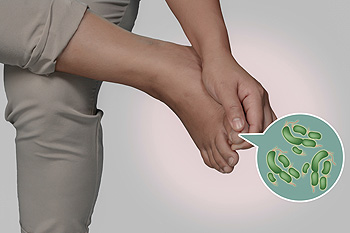 Toenail fungus is a fairly common condition that starts with a visible white or yellow spot under the tip of the toenail. If the fungal infection worsens the toenail may become discolored and thicken, then begin to crumble. Symptoms of progressing toenail fungus are thickened nails, whitish to yellow-brown discoloration, brittleness, distorted in shape, darkened color, and foul smell. Some toenail fungus is mild and doesn’t necessarily require treatment, but if it becomes painful or you notice some of the previously mentioned symptoms then it is a good idea to take steps toward getting rid of the fungus. Toenail fungus can affect just one nail, or it can affect multiple nails on the foot. If you think you may have toenail fungus, then it is recommended you speak with a podiatrist in order to receive the proper treatment.
Toenail fungus is a fairly common condition that starts with a visible white or yellow spot under the tip of the toenail. If the fungal infection worsens the toenail may become discolored and thicken, then begin to crumble. Symptoms of progressing toenail fungus are thickened nails, whitish to yellow-brown discoloration, brittleness, distorted in shape, darkened color, and foul smell. Some toenail fungus is mild and doesn’t necessarily require treatment, but if it becomes painful or you notice some of the previously mentioned symptoms then it is a good idea to take steps toward getting rid of the fungus. Toenail fungus can affect just one nail, or it can affect multiple nails on the foot. If you think you may have toenail fungus, then it is recommended you speak with a podiatrist in order to receive the proper treatment.
For more information about treatment, contact Brent Harwood, DPM of Southeast Podiatry. Our doctor can provide the care you need to keep you pain-free and on your feet.
Toenail Fungus Treatment
Toenail fungus is a condition that affects many people and can be especially hard to get rid of. Fortunately, there are several methods to go about treating and avoiding it.
Antifungals & Deterrence
Oral antifungal medicine has been shown to be effective in many cases. It is important to consult with a podiatrist to determine the proper regiment for you, or potentially explore other options.
Applying foot powder on the feet and shoes helps keep the feet free of moisture and sweat.
Sandals or open toed shoes – Wearing these will allow air movement and help keep feet dry. They also expose your feet to light, which fungus cannot tolerate. Socks with moisture wicking material also help as well.
If you have any questions please feel free to contact one of our offices located in Fairhope, Brewton, and Atmore, AL . We offer the newest diagnostic tools and technology to treat your foot care needs.
Read more about Treating Toenail Fungus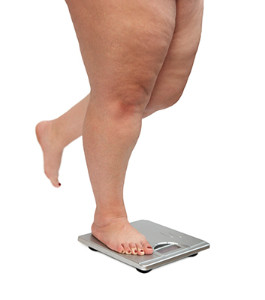 Obesity may cause pain in the majority of the foot. This is caused by extra weight the feet endure while daily activities are being performed. Many patients who are overweight notice they have heel pain, and this can lead to a condition this is known as plantar fasciitis. This is a result of a tear in the plantar fascia, which connects the heel to the toes. Relief is typically found if additional weight is lost, and when a mild exercise routine is frequently practiced. Many obese patients find it difficult to implement stretching and exercise techniques, and this is often because of the added weight that is carried around. If you are overweight and have foot pain, please speak with a podiatrist who can guide you toward implementing healthy lifestyle habits.
Obesity may cause pain in the majority of the foot. This is caused by extra weight the feet endure while daily activities are being performed. Many patients who are overweight notice they have heel pain, and this can lead to a condition this is known as plantar fasciitis. This is a result of a tear in the plantar fascia, which connects the heel to the toes. Relief is typically found if additional weight is lost, and when a mild exercise routine is frequently practiced. Many obese patients find it difficult to implement stretching and exercise techniques, and this is often because of the added weight that is carried around. If you are overweight and have foot pain, please speak with a podiatrist who can guide you toward implementing healthy lifestyle habits.
The more you weigh, the harder your feet must work to support your body. If you’re an obese individual and are concerned about your feet, contact Brent Harwood, DPM from Southeast Podiatry. Our doctor can provide the care you need to keep you pain-free and on your feet.
Obesity and Your Feet
People who are overweight are putting more pressure on their ankles, knees, and hips as well as their feet. This unfortunately can lead to variety of different issues.
Problems & Complications Stemming from Obesity
If you have any questions, please feel free to contact one of our offices located in Fairhope, Brewton, and Atmore, AL . We offer the newest diagnostic and treatment technologies for all your foot care needs.
 If a calcium deposit should forms between the arch of your foot and your heel, you may have a heel spur. This protrusion may grow gradually, and can be have a hooked, pointed, or even "shelf-like" appearance. Symptoms associated with this condition may include swelling, sharp pains in the heel and surrounding areas, or tenderness that is felt under the heel. If muscle and ligament strain damage the soft tissue in the heel, the result may the formation of a heel spur. Additionally, as the aging process occurs, the heel pads may not provide adequate shock absorption. The symptoms of heel spurs may be similar to those of plantar fasciitis, so it is advised to seek the counsel of a podiatrist who can properly diagnosis this condition.
If a calcium deposit should forms between the arch of your foot and your heel, you may have a heel spur. This protrusion may grow gradually, and can be have a hooked, pointed, or even "shelf-like" appearance. Symptoms associated with this condition may include swelling, sharp pains in the heel and surrounding areas, or tenderness that is felt under the heel. If muscle and ligament strain damage the soft tissue in the heel, the result may the formation of a heel spur. Additionally, as the aging process occurs, the heel pads may not provide adequate shock absorption. The symptoms of heel spurs may be similar to those of plantar fasciitis, so it is advised to seek the counsel of a podiatrist who can properly diagnosis this condition.
Heel spurs can be incredibly painful and sometimes may make you unable to participate in physical activities. To get medical care for your heel spurs, contact Brent Harwood, DPM from Southeast Podiatry. Our doctor will do everything possible to treat your condition.
Heels Spurs
Heel spurs are formed by calcium deposits on the back of the foot where the heel is. This can also be caused by small fragments of bone breaking off one section of the foot, attaching onto the back of the foot. Heel spurs can also be bone growth on the back of the foot and may grow in the direction of the arch of the foot.
Older individuals usually suffer from heel spurs and pain sometimes intensifies with age. One of the main condition's spurs are related to is plantar fasciitis.
Pain
The pain associated with spurs is often because of weight placed on the feet. When someone is walking, their entire weight is concentrated on the feet. Bone spurs then have the tendency to affect other bones and tissues around the foot. As the pain continues, the feet will become tender and sensitive over time.
Treatments
There are many ways to treat heel spurs. If one is suffering from heel spurs in conjunction with pain, there are several methods for healing. Medication, surgery, and herbal care are some options.
If you have any questions feel free to contact one of our offices located in Fairhope, Brewton, and Atmore, AL . We offer the latest in diagnostic and treatment technology to meet your needs.
Read more about How to Treat Heel Spurs